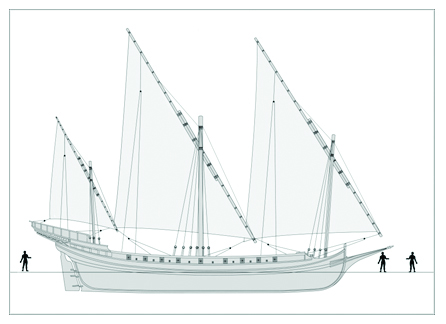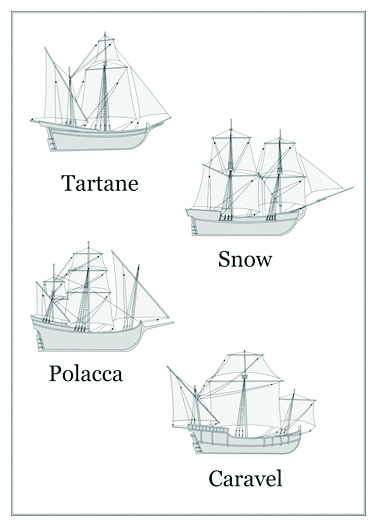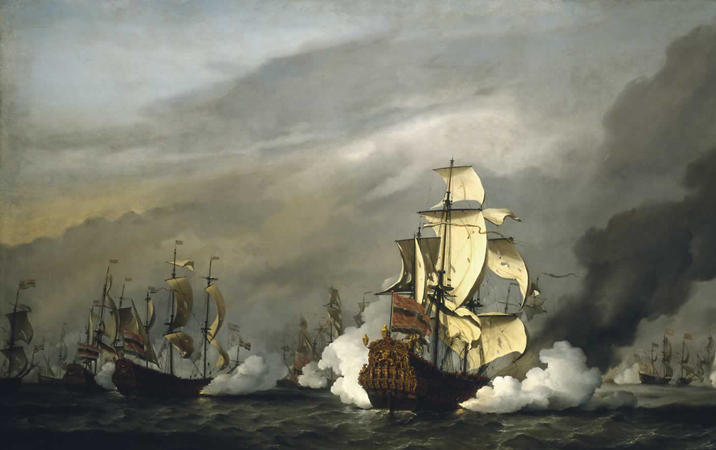When most people think of seventeenth century pirate ships, they think of the sort of vessel depicted in the image at the top of this post: a large ship with lots of cannon and lots of sails, attacking merchant shipping with a vicious ruthlessness.
Barbary corsairs did indeed sail in large ships of this sort in the seventeenth century—though they rarely made reckless head-on assaults; they were too risky. The corsairs of Salé, however, didn’t use ships like this.
Salé—a place to which I have devoted a number of posts in this blog over the years—was, remember, the infamous corsair capital located on the Atlantic coast of Morocco.
Salé was—and is—actually two towns that straddle the mouth of the Bou Regreg River, which flows northwestwards from its headwaters in the Middle Atlas Mountains and empties into the Atlantic Ocean about 155 miles (250 kilometers) south of the Strait of Gibraltar. The settlement on the north bank of the river is today known as Salé, that on the south bank as Rabat (now the capital city of Morocco). The twin modern cities are frequently referred to as a single place—Rabat-Salé. Seventeenth century Europeans, however, tended to refer to the town on the north bank of the river as Old Salé and that on the south bank as New Salé.
It was New Salé, the settlement on the river’s south bank, that became the corsair capital.
It was a wild place.
Between 1620 and 1630 alone, the corsairs of New Salé plundered over a thousand European ships. During that same period, the Salé corsair fleet expanded from a handful of vessels to fifty or so, and by the late 1620s and early 1630s, the city contained around 1,500 slaves. The population of Salé during this period was a little over 15,000, so if you found yourself walking along the streets there, every tenth person you met would have been a slave.
So the Salé docks, where returning corsair ships unloaded their cargoes of booty and captives, were a busy place. Located a little upriver, they were protected from attack by irate European powers, but this location also presented a problem.
There was a shifting sandbar across the mouth of the Bou Regreg River that restricted access to the Salé port. Ships could only “cross the bar” (as the saying went) at high tide, and even then, only vessels with a draft of less than about 10 feet (3 meters) could reliably make the crossing. This restricted the size of ship the Salé corsairs could use.
So large ships with lots of sails and lots of cannons were of no practical use to them, and they had to employ other, smaller vessels.
One of the vessels they used was the Xebec (also sometimes spelled Chebec). Xebecs could vary from about 80 to about 115 feet (25 to 35 meters) in length, with a draft of 3 to 6.5 feet (1 to 2 meters). They were typically rigged with three lateen sails—triangular sails each set on a single, angled yard that could swing around the mast with the changing direction of the wind—and could mount up to 20 cannon or so, of varying calibers. They were typically equipped with oars for maneuvering close to shore or in windless conditions. See the illustration below. The horizontal line represents the waterline. The image depicts a vessel about 90 feet (27 meters) long, with the human figures shown to scale.

Xebecs were excellent vessels for the sorts of weather/sea/wind conditions typically found in the Mediterranean, and they were equally effective for cruising close to shore pretty much anywhere, but they were not especially good deep water vessels, in large part due to the lateen sails. Because of their shape, such sails were good at gathering wind when there was only a light breeze, and they were very efficient when the ship was sailing “close to the wind”—that is, sailing in the direction from which the wind was blowing. However, when the ship was sailing “before the wind”—with the wind behind it—they were not nearly as efficient. Square-rigged ships—ships equipped with square sails—performed much better when sailing before the wind, and, as a bonus, were safer to handle, since the individual sails were smaller and easier to control, and they did not have to swing around the mast whenever the wind, or the ship, changed direction. For the sorts of long-distance, open-ocean cruises the Salé corsairs began conducting in the early seventeenth century, square-rigged ships were the sensible option.
But the shallowness of the Salé harbor, and the challenge of crossing the bar, meant they were restricted to relatively small square-rigged ships. Salé corsairs made use of a wide variety of vessels—pretty much whatever they could lay their hands on—but the main types seem to have been tartanes, snows, polaccas, and caravels.
There was a bewildering variety of square-rigged sailing ships in the seventeenth century, and it can be difficult to keep them clear if one is not familiar with such things. It helps, perhaps, to think of an analogy with modern automobiles. There are various types of vehicles: sedans, hatchbacks, wagons, minivans, SUVs, pick‑up trucks, etc. Within these basic types, there are variations: subcompact, compact, mid‑sized, full‑sized; gasoline or diesel; two‑wheel, four‑wheel, or all‑wheel drive.
A similar sort of breakdown can be applied to seventeenth century ships. Tartanes, snows, polaccas, and caravels can be thought of as the equivalent of basic car types, like sedans, hatchbacks, wagons, or minivans. Within each type of ship there was considerable variation, but each type had certain defining characteristics, like number of masts or sails, types of sails, etc.
See the illustration below for images of the four types of ships (the images are not to scale relative to each other). Notice that none of these ship types resembles the image of the classic three-masted, square-rigged, multi-sailed, multi-cannoned ship that most people have in mind when they think of seventeenth century pirate ships. These were smaller vessels, in the 60-100 foot (18-30 meter) range, relatively lightly armed for the most part, but fast and nimble.

We’ll look at some details of these ships in The Ships of Sale – Part 2.

Corsairs and Captives
Narratives from the Age of the Barbary Pirates
View Amazon listing
The Travels of Reverend Ólafur Egilsson
The story of the Barbary corsair raid on Iceland in 1627
View Amazon listing